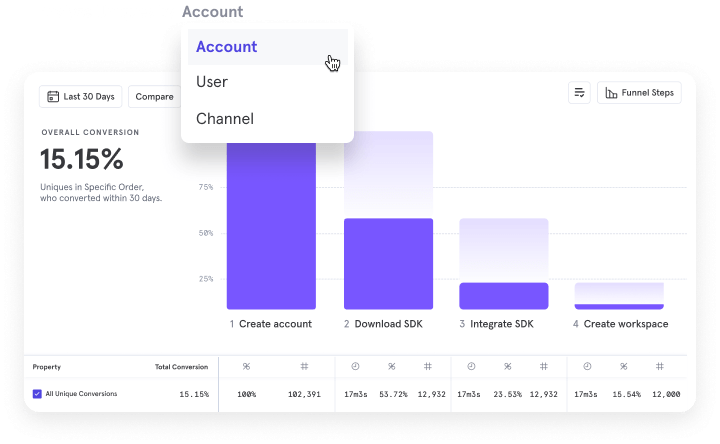The “first” stage of product analytic maturity covers businesses that have no existing product analytics capabilities.
Product analytics is non-existent, and development is guided by something other than product metrics: limited customer feedback, intuition, or assumptions about user behavior.
It’s not that these companies don’t have product analytics tools available to them. It’s just that the discipline isn’t there. They want to work out — they just haven’t purchased the dumbbells yet.

Many startups or non-digitally native businesses believe they have to reach a certain threshold of data in order for it to be valuable or necessary to uncover insights.
However, businesses don’t have to stay here long. No signal is too small, and low data volumes are often tracked for free on analytics tools, so there is no cost. These businesses can quickly move to any of the following stages as long as they have a commitment to using data to improve their products. The more buy-in a company has at all levels in data-driven decision making, the easier it will be to move to more advanced stages.
Example of Non-Existent
product analytics maturity
Imagine a new startup with a single product: a ridesharing app.
In Stage 0 of the product analytics maturity process, the product may still be in ideation or in a closed beta launch. Those involved have yet to track or analyze any real metrics. They’re simply planning on providing a product to a customer base, or have a very limited audience for the purpose of product feedback.
How to move on from Non-Existent
Start defining the questions you would want answered:
- How many rides does the average user take a week?
- On what days of the week are most users taking rides?
- What behaviors lead users to buy a package of rides or to refer a friend?
- How long is the average ride and how does it vary by city?
There’s no way to use data well without first having data to use.
No company is too small to prepare to collect, organize, and analyze data — it’s the foundation of building great products and accelerating your growth in product analytics maturity.
![pas-img02[1]](https://mixpanel.com/wp-content/uploads/2020/11/pas-img021-1.png)
